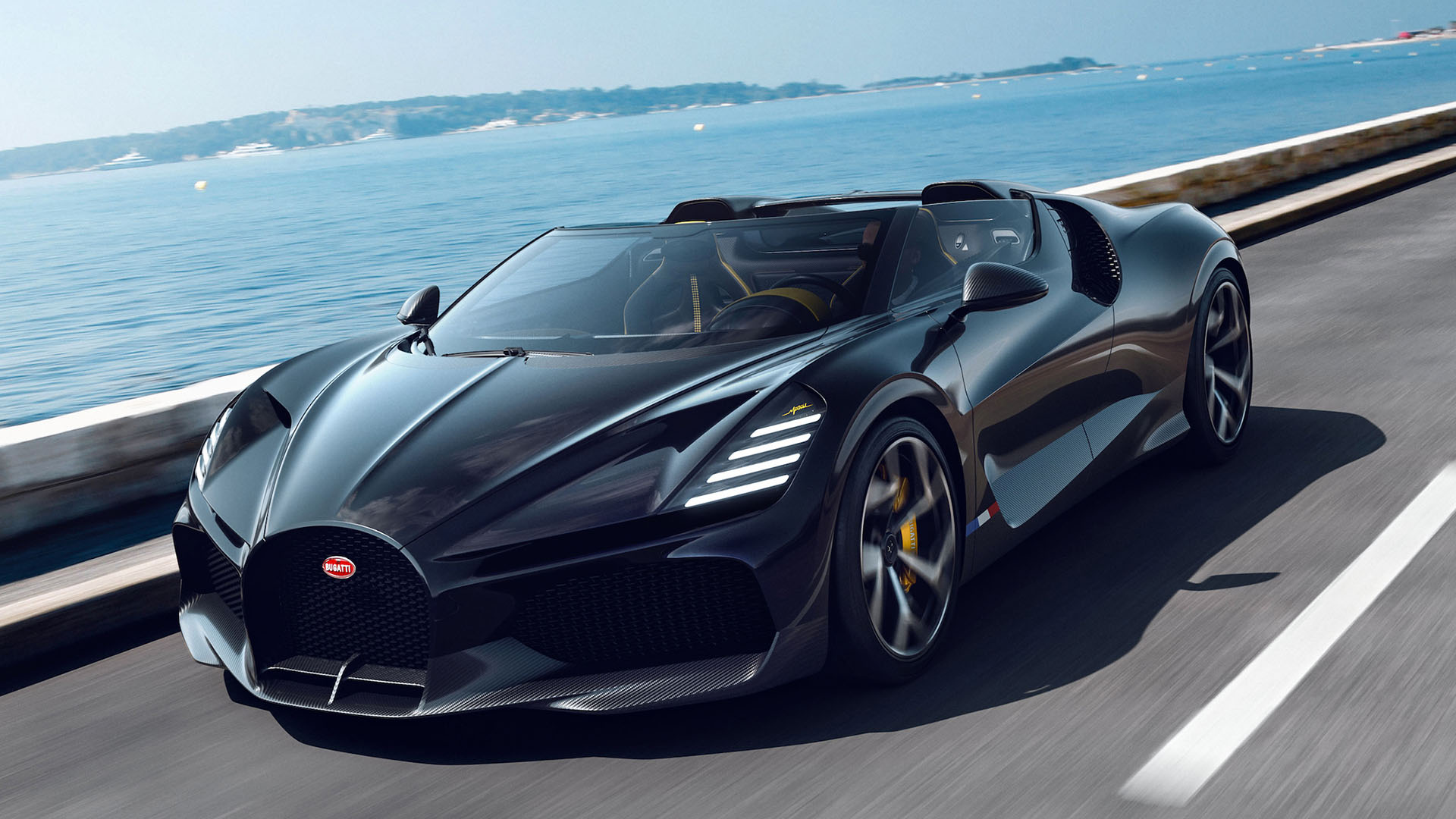

As we approach the end of the mighty Bugatti W16‘s very long and very superlative life, the automaker has at least one more send-off up its sleeve. This is the Bugatti W16 Mistral: the roadster version of the Chiron. I guess we are just acting like that time in 2016 when Bugatti said it wouldn’t make a Chiron roadster never happened. That is fine! Because, God, does the Mistral look good.
To be fair, the Mistral roadster isn’t really a Chiron roadster because it technically has a different name and different exterior design. The name “Mistral” comes from a kind of cold, northwesterly wind that blows through southern France.


Design inspiration came from the 1934 Bugatti Type 57 Roadster Grand Raid. The V-shaped, curved, wraparound windshield is cut in a way that makes it look like it’s part of the side windows. The Mistral loses the Chiron’s C-shaped silhouette from its side profile and gains two new engine air scoops on the roof—behind the passenger cabin—marking where the engine’s air intakes now sit. These scoops can apparently withstand the entire weight of the car in the event of a roll and are made from a “bespoke carbon fiber structure,” according to Bugatti.
The car’s face is also unique; it certainly does not look like a Chiron at all. You can tell it’s a Bugatti thanks to its horseshoe-shaped grille, but the vertically oriented headlines are a departure from the Chiron’s horizontal ones. Each headlight features a stacked, four-light strip, which Bugatti says is a reference to the car’s four-wheel drive and quad turbochargers. If you’re at all familiar with the Bugatti Bolide, then you’ll recognize the X-shaped taillight design the Mistral also wears.




Within, there are newly designed door panels with woven leather. Bugatti specifically calls out the gear shifter that’s not only made from a solid hunk of aluminum but also includes a wood-and-amber insert with Rembrandt Bugatti’s “dancing elephant” sculpture encased inside.
The W16 found at the heart of the Mistral is the same one from the Chiron Super Sport 300+, meaning that it, too, produces a claimed 1,578 horsepower. Bugatti reminds us that the W16 in the Veyron 16.4 Grand Sport Vitesse—the last time it made a roadster—made 1,184 hp. The more powerful version of the engine in the Mistral ought to maintain Bugatti’s title of producing the fastest convertible in the world.






It truly does sound like this will be the last W16-powered car Bugatti will produce. Its design director, Achim Anscheidt, said in the car’s release, “We know the W16 Mistral will always have significance in the story of Bugatti, marking the last time that perhaps the greatest ever automotive powertrain is used in a roadgoing production car.”
Bugatti will only build 99 examples of the W16 Mistral—each priced at 5 million euros, or $5 million—and all of them have already been sold out. Deliveries are set to start next year. This is one of those cars that we can all look at pictures of but will probably never get to touch.







Got a tip? Email kristen@thedrive.com